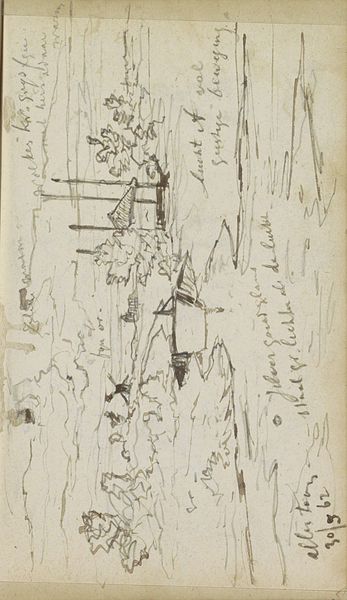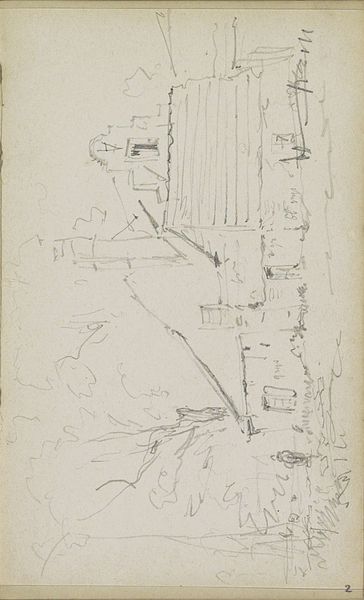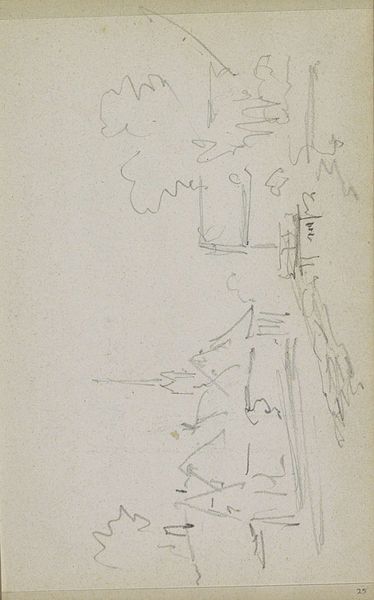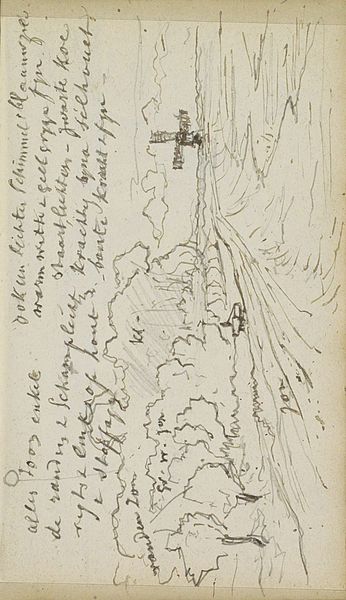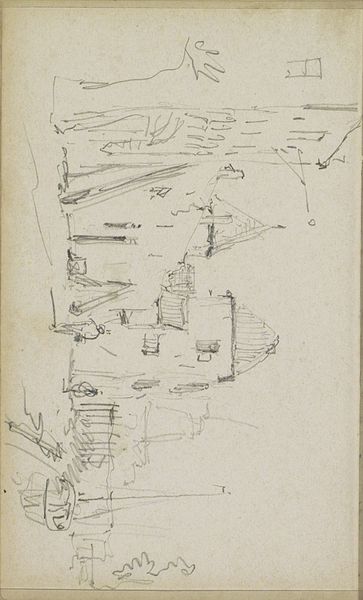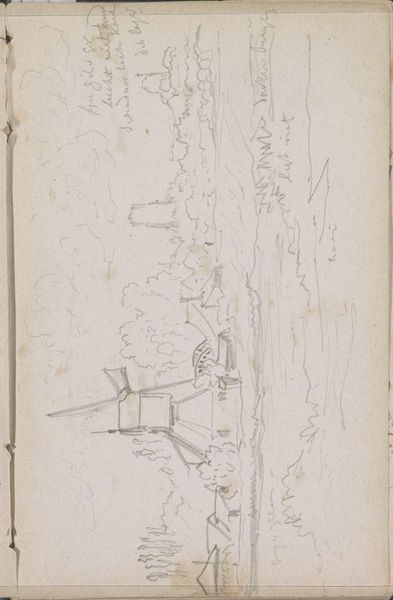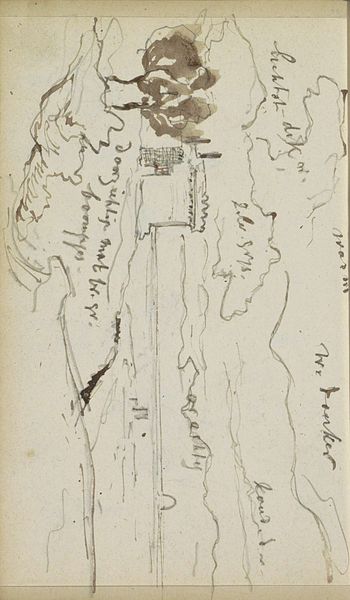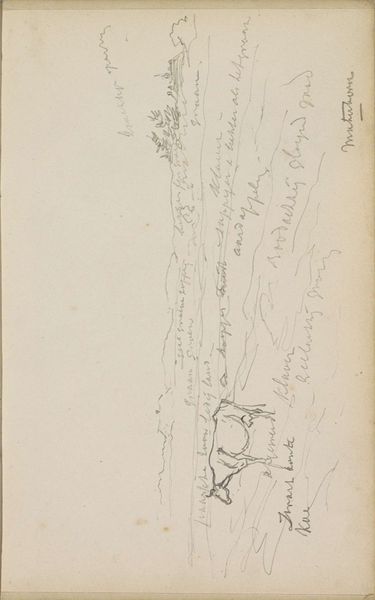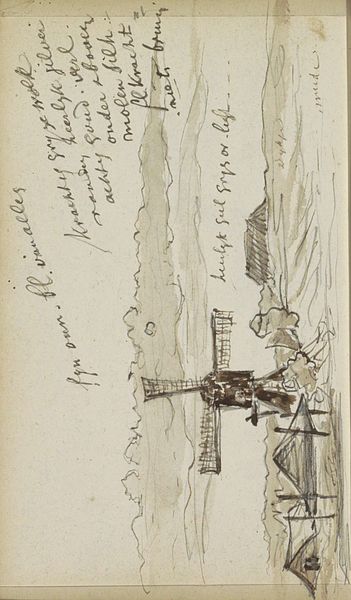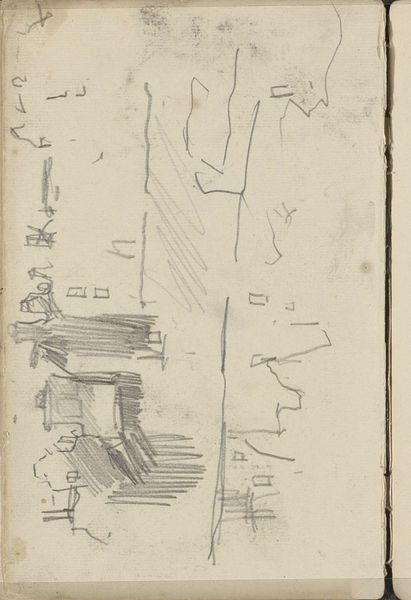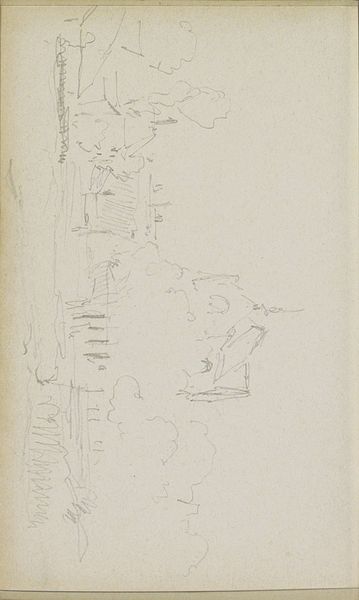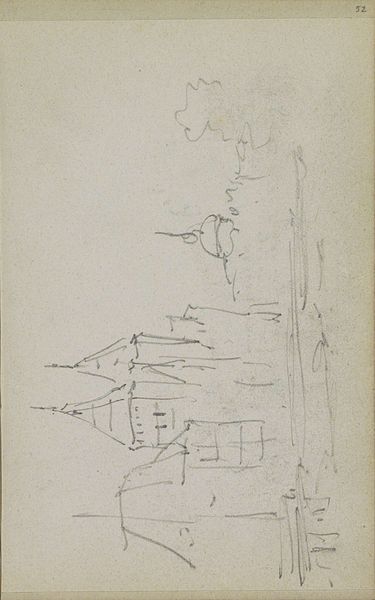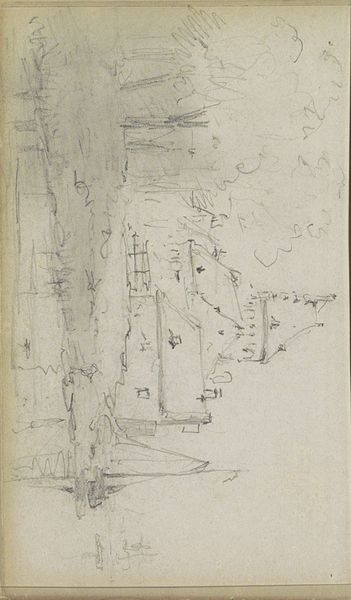
drawing, paper, pencil
#
drawing
#
amateur sketch
#
aged paper
#
toned paper
#
light pencil work
#
incomplete sketchy
#
hand drawn type
#
landscape
#
paper
#
personal sketchbook
#
ink drawing experimentation
#
romanticism
#
pencil
#
sketchbook drawing
#
sketchbook art
Copyright: Rijks Museum: Open Domain
Editor: This pencil drawing by Johannes Tavenraat from 1839, "View of Kleef with the Tower of the Schwanenburg," feels like a fleeting impression. It’s sketched on aged paper, and the lines are so light. What do you see in this piece, especially beyond just the literal depiction of the landscape? Curator: I see a mind at work, recording not just a place, but a feeling evoked by the place. Notice the handwritten notes scattered across the image, almost like glossolalia. It is as if Tavenraat is capturing thoughts that the tower and landscape provoked. Editor: That’s a fantastic observation. So, the text becomes part of the imagery, almost like personal symbols? Curator: Precisely. Consider the tower itself – the Schwanenburg. For the artist, it's not just stone and mortar. Perhaps the tower holds a certain memory that conjures feelings from Tavenraat's unconscious and he attempts to wrestle and clarify such on the sketch itself. How might the context of 1839 – a time of emerging Romanticism – affect Tavenraat's view? Editor: It's interesting how the act of sketching becomes a dialogue between the artist and his subject. I’ll look for symbolism in plain sight, and for private codes alongside conventional meanings. Curator: Remember that even seemingly simple landscape drawings can carry a heavy emotional and historical weight. The artist's interaction is another symbol to unlock.
Comments
No comments
Be the first to comment and join the conversation on the ultimate creative platform.
